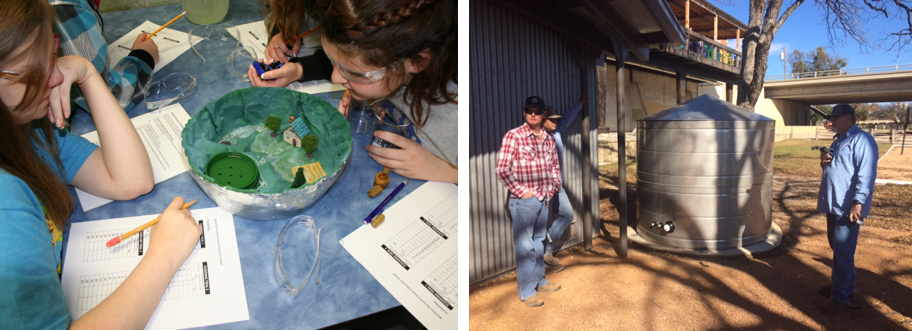Global climate projections provide information that can motivate action on a national or regional scale but do not necessarily provide the amount of detail that is useful at a local level or information that is relevant to a community. Historically, climate projection analyses have been based on thresholds that were determined by scientists. However, as scientists have worked harder to connect their work with local and state level stakeholders, they have begun to realize that a single threshold may have very different meanings in different communities. For example, 90°F in Texas is certainly hot but occurs relatively frequently, so Texans have adapted to that temperature by using air conditioning. However, 90°F in Wisconsin will likely have larger impacts because air conditioning is less common and Wisconsinites don’t experience that temperature as often.
SCIPP partnered with Adaptation International (lead), CLIMAS, WWA, ISET-International, and ATMOS Research, to pilot a participatory process to identify locally relevant critical thresholds for extreme events, and use those thresholds to customize climate projections to community-specific needs. The work was funded by the NOAA Sectoral Applications Research Program. The team engaged with four small- to medium-sized communities: Boulder, CO, Las Cruces, NM, Miami, OK and San Angelo, TX. SCIPP was involved with the work in Miami, OK and San Angelo, TX.
Ground work was laid in each city before developing the custom climate projections. Two workshops, called Shared Learning Dialogues, were held with stakeholders who represented a variety of sectors and functions within the local government in each city to identify potential climate thresholds and discuss what actions could be taken to address the challenges associated with existing hazards as well and the hazards that the community may face in the future.In between each workshop, project team members had additional discussions with stakeholders to further refine the thresholds, then ATMOS Research computed projections at the chosen thresholds specific to each of the four communities.
Not all projections were possible to produce due to scientific or funding limitations. For example, some of the climate variables that stakeholders in Miami were interested in receiving projections for included tornadoes and ice storms. However, climate projections for tornadoes are not currently possible due to observational data and other scientific limitations. Ice storm projections are scientifically possible but were not possible to produce for this project due to funding limitations.
The project ended with each pilot community determining a resilience action based on the threshold analyses that could be implemented using approximately $10,000 in seed funding provided by the grant. The projects that were selected by the community stakeholders in SCIPP’s region included: developing a lesson on extreme weather and preparedness for 8th graders in Miami, OK and designing and installing a rainwater harvesting system at a local park to demonstrate city leadership, save money, water trees, and be better prepared for drought in San Angelo. Further, the seed funding spurred additional action in at least one of the four cities, including that Las Cruces leveraged San Angelo’s resilience action and then developed a green infrastructure plan for a neighborhood. The green infrastructure plan was then used to secure an additional $400,000 in grants and matching funds to begin to renovate and install green infrastructure in a portion of a traditionally under served neighborhood.

For additional information, including project materials, visit this project on the Past Research page here.
